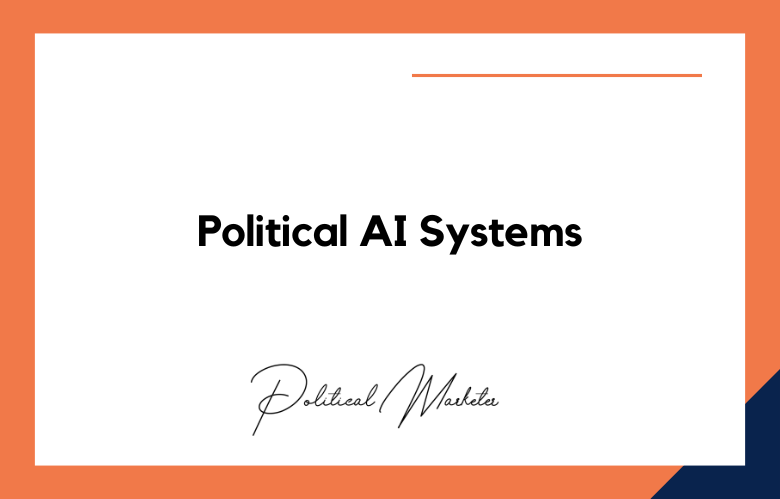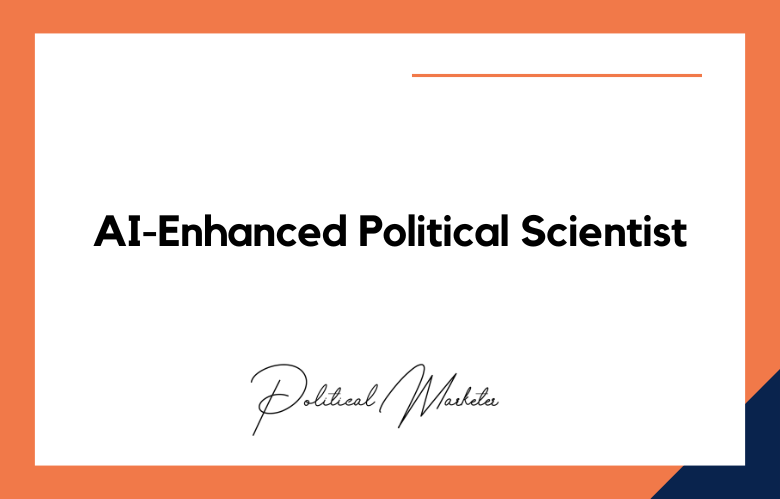Political polarization is a growing problem in the world today. With the rise of social media and the increasing divide between different sides of political issues, it’s become more challenging to have productive conversations or reach common ground.
But could generative AI hold the key to solving this problem? In this blog post, we’ll explore the promise of generative AI in addressing political polarization and the challenges of creating AI systems that can productively engage people on all sides of an issue.
Generative AI is artificial intelligence that can create original content, whether text, images, or music. The potential applications of generative AI are vast, including uses in creative arts, marketing, and journalism.
But one of the most promising application areas is addressing political polarization. Imagine an AI assistant who could engage in intelligent, non-biased conversations with people on all sides of an issue, helping to bridge divides and encourage productive dialogues. This kind of technology could be a game-changer in the world of politics.
How Generative AI Can Tackle Political Polarization
Political polarization is a complex societal problem with no easy solution. People with different political beliefs tend to become more and more divided over time, unable to understand or communicate with each other.
In recent years, the impact of social media has exacerbated this problem, with algorithms promoting content that confirms our preexisting beliefs instead of challenging them.
Researchers and experts are working to find innovative solutions to this challenging issue, and generative AI technology has emerged as a potential game-changer.
Generative AI is a subfield of machine learning that uses algorithms to generate data such as images, text, and sound. It is capable of mimicking human creativity and producing new, original content.
Revolutionizing Politics: The Potential of Generative AI in Reducing Polarization
Using generative AI in politics could revolutionize how we approach reducing polarization.
Through advanced algorithms and machine learning technologies, generative AI can help identify individual biases, analyze political discourse and public sentiment, and promote cross-partisan communication and cooperation.
One potential application of generative AI is in developing personalized political messaging. By analyzing individuals’ social media profiles, generative AI can determine their interests and political leanings and craft messages that resonate with them.
In doing so, generative AI has the potential to move beyond the “echo chambers” of social media and promote more diverse and meaningful political conversations.
The Role of Generative AI in Overcoming Political Divides
In recent years, political divisions and tensions have grown increasingly pronounced, particularly in nations like the United States, where intense partisanship has led to polarizing rhetoric, governmental gridlock, and social unrest.
While many factors can contribute to these challenges, there is growing recognition that technology – especially artificial intelligence (AI) – could play a pivotal role in fostering greater understanding and collaboration between divergent political factions.
In particular, the growing field of generative AI has shown promise as a tool for bridging political divides and expanding public discourse.
Generative AI is a subtype of AI that produces responses, images, or other forms of creative output based on a given input or other parameters.
While still an emerging technology, experts believe that generative AI has the potential to revolutionize a range of fields, from healthcare to the arts. In politics, productive AI-powered tools could be a powerful way to help individuals with divergent views engage in constructive dialogue and exchange ideas.
The Democratization of Ideas: Empowering Citizens through Generative AI
The democratization of ideas is a pivotal concept in today’s world, where technology is driving revolutionary changes across different fields.
Making data available to the masses has gained immense popularity as it presents an opportunity to empower citizens to take control of their lives by making informed decisions.
The advent of generative AI has further amplified the possibilities of democratizing ideas by presenting an unprecedented case of personalizing information flow.
Generative AI is a powerful machine learning application that facilitates data generation from scratch by inferring patterns from large datasets.
This technology is transforming different industries by revolutionizing how we collect, process, analyze, and disseminate data. With its power to generate customized content, Generative AI enables the democratization of ideas by creating a personalized info-ecosystem that tailors information to individual needs.
Bridging the Divide: Can Generative AI Tackle Political Polarization?
Political polarization has become a pressing issue in many societies worldwide, with the gap between different political ideologies growing more comprehensive daily.
This polarization has been a significant factor contributing to the breakdown of political unity and the rise of populism. To bridge this divide, researchers are exploring the potential of generative AI in mitigating political polarization.
Generative AI, also known as deep learning, is a pattern recognition technology that relies on neural networks to analyze and generate content.
It has been used in various fields, from image and speech recognition to natural language processing. With its ability to analyze vast amounts of data in real-time, generative AI is a promising tool for tackling political polarization and bringing people together.
Breaking Barriers: How Generative AI Can Combat Political Polarization
Political polarization has been a long-standing issue in modern-day society, where individuals with different political beliefs and ideologies hold increasingly divergent views.
This has led to a toxic political climate where compromise and civility have become scarce. However, generative AI holds the potential to combat political polarization by breaking down the barriers that divide us.
Generative AI involves using machine learning algorithms to develop new data by emulating human thought processes. By analyzing vast amounts of data, generative AI can create models that generate human-like responses to various stimuli.
Such technology can model political beliefs and preferences and then predict and generate persuasive messages tailored to individuals across the political spectrum.
Overcoming the Divide: Generative AI Strategies for Reducing Political Polarization
Political polarization has become a growing concern in many parts of the world. With an increasing number of people identifying themselves as either left or right-leaning, there has been an increasing divide between people from different political affiliations.
This divide has hindered progress on many fronts, with people from opposite sides finding it difficult to agree on policy measures and other important issues.
To tackle this issue, the field of artificial intelligence (AI) has been exploring the use of generative AI strategies to reduce political polarization.
Generative AI refers to AI systems that produce output similar to a human’s. In the context of reducing political polarization, these systems can create less polarizing content and are more likely to resonate with people from different political backgrounds.
Conclusion:
While the challenges of creating a generative AI system that can productively address political polarization are significant, the potential benefits could be enormous.
By facilitating productive, informed conversations between people on all sides of an issue, AI could help to bridge divides and overcome deeply ingrained biases.
However, to accomplish this, we will need to build and train AI systems that are sophisticated, non-biased, and transparent. Doing so can take an essential step toward a more unified, productive, and empathetic society.
Frequently Asked Questions (FAQs)
What is generative AI and how does it relate to political discourse?
Generative AI refers to algorithms capable of creating text, images, audio, and video. In politics, it can be used to craft narratives, simulate conversations, or create propaganda, influencing public opinion.
Can generative AI deepen political polarization?
Yes, by amplifying echo chambers, spreading biased content, or creating highly targeted messaging, generative AI can reinforce existing beliefs and widen ideological divides.
How does generative AI contribute to misinformation?
AI-generated content can produce realistic but false narratives, deepfakes, or misleading articles that are indistinguishable from authentic news, confusing voters and shaping opinions deceptively.
Are political actors using generative AI to manipulate narratives?
In many cases, yes. Political parties, interest groups, and foreign actors have explored or deployed generative AI to sway public opinion or attack opponents through automated content.
What role does algorithmic bias play in AI-generated political content?
If training data is biased or unbalanced, the AI’s outputs will reflect those same biases, potentially marginalizing certain viewpoints or reinforcing stereotypes.
How do deepfakes affect political trust?
Deepfakes erode public confidence in media, as they make it harder to distinguish between real and fake statements, especially during election periods.
Can generative AI be used to promote political unity instead?
Yes, if intentionally designed, AI can help foster dialogue, surface diverse viewpoints, and present balanced summaries of opposing arguments to bridge divides.
What platforms are most vulnerable to AI-generated polarization?
Social media platforms like YouTube, X (formerly Twitter), Facebook, and TikTok are especially susceptible due to algorithmic amplification and lack of real-time content vetting.
How can fact-checkers combat generative AI misinformation?
By using AI-powered detection tools, watermarking, and cross-platform verification to identify synthetic media and provide reliable context.
Are governments regulating generative AI in political campaigns?
Some countries are beginning to implement rules requiring disclosure of AI-generated content and monitoring its use in elections to ensure transparency.
How does generative AI affect political advertising?
AI can create thousands of ad variations for micro-targeting different voter groups, increasing manipulation risks without clear disclosure.
What are the psychological effects of AI-generated political content?
Repeated exposure to emotionally charged, one-sided AI content can reinforce group identity, reduce empathy, and polarize attitudes further.
Can generative AI simulate public opinion trends?
Yes, generative AI models can be used to synthesize likely public reactions, but such simulations can also be manipulated to mislead campaign strategies or journalists.
What ethical issues arise from AI-driven political communication?
Issues include consent, authenticity, misrepresentation, algorithmic opacity, and the undermining of democratic debate and critical thinking.
Are tech companies addressing AI-driven polarization?
Some platforms are investing in detection systems and user education, but regulation and enforcement lag behind technological growth.
Can AI-generated content increase voter turnout or apathy?
It depends. Positive, motivating content may drive civic action, while overwhelming or negative AI content can lead to disengagement and distrust.
How can transparency mitigate AI’s impact on polarization?
Labeling AI-generated content, requiring political campaign disclosures, and educating users on media literacy can reduce manipulation and build trust.
Do generative AI tools reinforce filter bubbles?
Yes, especially when paired with recommendation algorithms that prioritize engagement, which often means more extreme or familiar viewpoints.
How should political communicators ethically use generative AI?
By ensuring transparency, avoiding disinformation, promoting inclusivity, and using AI to educate and unite rather than divide.
What is the future of generative AI in polarized societies?
Its role will be determined by how responsibly it’s governed—either as a tool for inclusion and dialogue or as a driver of division and digital disinformation.










